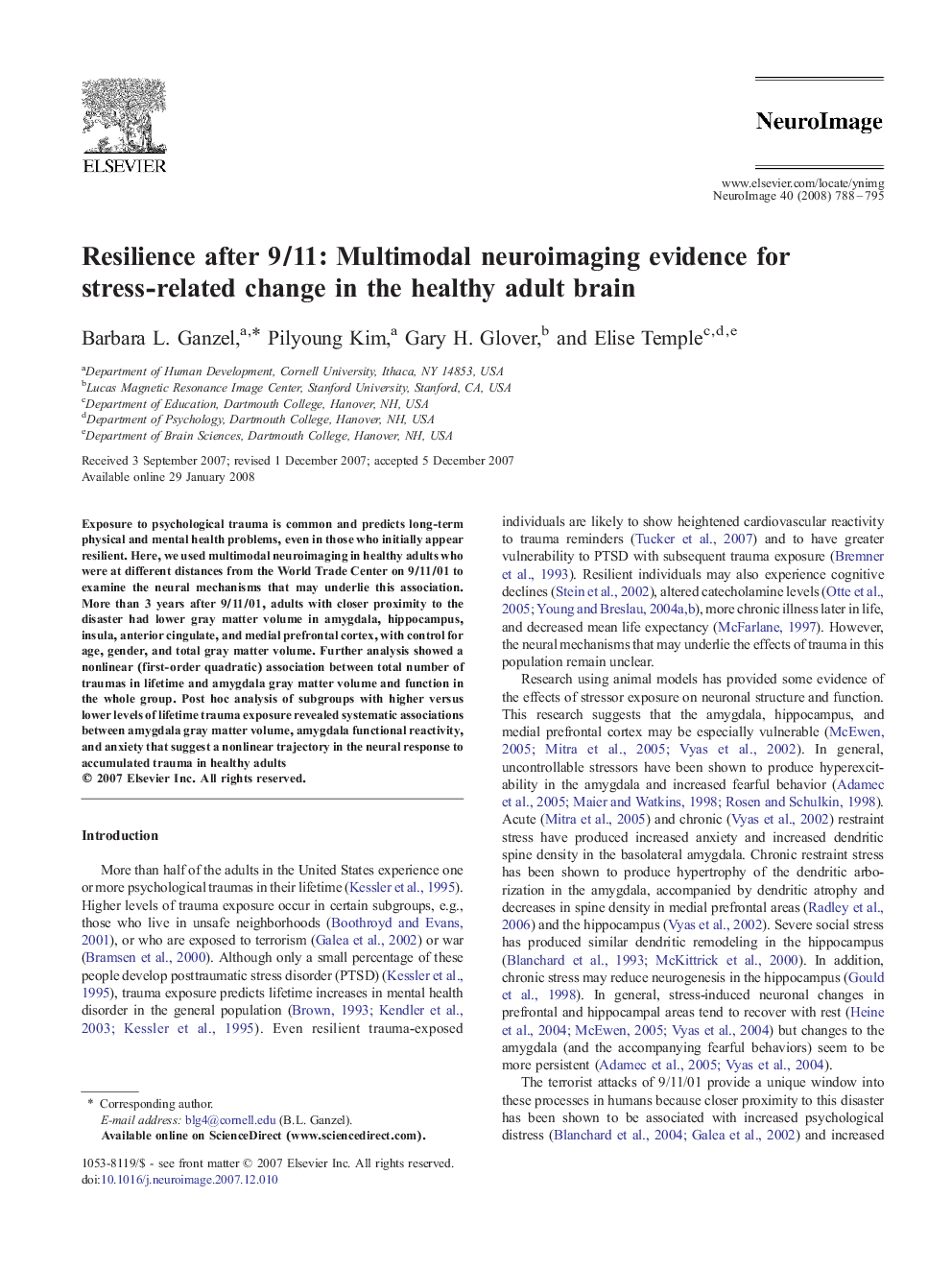| Article ID | Journal | Published Year | Pages | File Type |
|---|---|---|---|---|
| 6039838 | NeuroImage | 2008 | 8 Pages |
Abstract
Exposure to psychological trauma is common and predicts long-term physical and mental health problems, even in those who initially appear resilient. Here, we used multimodal neuroimaging in healthy adults who were at different distances from the World Trade Center on 9/11/01 to examine the neural mechanisms that may underlie this association. More than 3 years after 9/11/01, adults with closer proximity to the disaster had lower gray matter volume in amygdala, hippocampus, insula, anterior cingulate, and medial prefrontal cortex, with control for age, gender, and total gray matter volume. Further analysis showed a nonlinear (first-order quadratic) association between total number of traumas in lifetime and amygdala gray matter volume and function in the whole group. Post hoc analysis of subgroups with higher versus lower levels of lifetime trauma exposure revealed systematic associations between amygdala gray matter volume, amygdala functional reactivity, and anxiety that suggest a nonlinear trajectory in the neural response to accumulated trauma in healthy adults
Related Topics
Life Sciences
Neuroscience
Cognitive Neuroscience
Authors
Barbara L. Ganzel, Pilyoung Kim, Gary H. Glover, Elise Temple,
